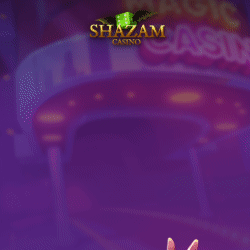Evolving Blackjack Market Lesson [What Happens When the Game is Left with Fewer Benefits?]
![Evolving Blackjack Market Lesson [What Happens When the Game is Left with Fewer Benefits?]](/wp-content/s/2019/06/evolving_blackjack_market_lesson.jpg) You can play all the cards some of the time & some of the cards all the time but you cannot play all the cards all the time.
You can play all the cards some of the time & some of the cards all the time but you cannot play all the cards all the time.
The essential business rule and a recipe for success is a simple one — if product or service is to prevail in ever-changing customers’ habits, it has to provide both the value and emotional benefit. While this may sound fairly logical, it is not always sustainable; reasons vary depending on the industry.
When it comes to blackjack, the reality has proven this rule on both sides of gambling coin — the ascending one, which made it the most popular casino table game, and a descending one, that saw it steady lose the ground.
Resembling wavelength with an irregular spatial period, blackjack interactions with gamblers have always been different due to strategic nature of the game – it is intended for intelligent, analytical players preferring to rely on skills and knowledge in a plausible effort to beat the house.
Those players do not come in bunches. But when they do, they leave a notable trace at blackjack tables often occupied by less determinate and disciplined patrons infinitely more favored by casinos.
To maintain their profit equilibrium – a challenge further exacerbated by a peculiar penchant for this card game exercised by highly intelligent and educated academic community — gambling houses often resort to downsizing the value of opportunities at players’ disposal by enforcing new rules, which in turn trim emotional benefits.
In this circular engagement, as history and analytics show, lays the rub istering evolving blackjack market lesson — the game matters only if patrons can do something with it.
Top United States Casinos
On the Way to the Top
 Of course, none of this was on Miguel de Cervantes’ mind when he wrote Rinconete y Cortadillo, a short story published in 1613. Following a couple of very poor and young boys making their living by playing card game named ventuina (twenty-one in Spanish), the author of Don Quixote, in fact, made the first reference of blackjack ever.
Of course, none of this was on Miguel de Cervantes’ mind when he wrote Rinconete y Cortadillo, a short story published in 1613. Following a couple of very poor and young boys making their living by playing card game named ventuina (twenty-one in Spanish), the author of Don Quixote, in fact, made the first reference of blackjack ever.
In time, the game evolved in French casinos; called Vingt-en-Un (twenty-one in French), it was a favorite pastime of Napoleon Bonaparte. When the French colonists came to North America, twenty-one followed; with a simple set of rules and objectives, it quickly gained popularity across the continent in the 20th century.
In the lineup of casinos, however, blackjack was a healthy scratch — a player on the roster who does not dress for a game — up until the 1960s, when three privates and a sergeant of the U.S. Army created a definite guide to optimal gaming strategy which propelled the game to gambling stardom.
The military ranks of a quartet — Roger Baldwin, Wilbert Cantey, Herbert Maisel, and James McDermott — are highly misleading: all of them were with master’s degrees in mathematics at the time. Their scientific attempt became to be known as The Optimum Strategy in Blackjack, published at the Journal of the American Statistical Association in September 1956.
The document misbalanced already low house edge of blackjack hovering in the theoretical vicinity of two percent. A mathematically proven set of rules for the game, dictating the player how to proceed with any hand — including the advanced twenty-one variations – lowered the casino advantage well under 1% and often under 0.5%; when perfectly executed, the strategy cuts the house edge to almost zero.
To top it all off, in 1962, Edward Thorp, an American author and professor with Ph.D. in mathematics, published Beat the Dealer, a bestseller book explaining how to create a statistical advantage over the casino by counting cards in blackjack.
Consequently, the game popularity skyrocketed to the concurrent level of casino managers’ initial panic.
What kept the balance stable was a simple human factor — not all players were smart and disciplined to follow through the strategy perfectly.
What Goes Up Must Come Down
 In the infinite flow of casino players, only a few have left a notable trace, like Stanford Wong, Kenneth Uston, John Ferguson, Bryce Carlson, Don Johnson, and all too well known MIT Blackjack Team.
In the infinite flow of casino players, only a few have left a notable trace, like Stanford Wong, Kenneth Uston, John Ferguson, Bryce Carlson, Don Johnson, and all too well known MIT Blackjack Team.
During those years, the game itself remained the same, as well as table layouts and casinos’ overall approach to customers — reactive, with no outreach and no attempts to make the game more social.
The prevailing notion was: the name of the game is to make the game profitable to gambling houses.
To that end, a number of casino managers, unease at the blackjack potential upside for players, showed the commendable level of proactiveness to whittle off players’ edge.
Their choice fell on the game rules.
The first modification was on dealer’s handling of soft 17. As the tradition dictates, the dealer stood on this hand; by modifying the rules to mandate additional compulsory card, casinos added close to 0.2% to the house edge. What may seem like peanuts to uninitiated was actually huge for operators facing close to zero advantage; in addition, when multiplied by thousands of hands, it adds up.
Other seemingly insignificant tweaks like multi-deck shoes, restricting pair-splitting options, and automatic shufflers were designed to favor the house, and in the short term, they succeeded.
What added insult to injury was 6:5 blackjack. The traditional rules govern natural blackjack payout to 3:2, which is to say that $10 bet returns $15. The 6:5 makes it only $12. Furthermore, a player will get four blackjacks per hour on average, thus for each one played at 6:5 table it will hand over to the casino extra $12.
Marketed as the enticing possibility to hit blackjack in a single deck game, the 6:5 variant in effect restores the house edge on a perfectly-played strategy to 2%.
Becoming quite common in the majority of Las Vegas casinos nowadays — 3:2 is available only at high-rollers tables betting $100 per hand or more; conveniently enough, not a single whale will play 6:5 — a walk through casino floor paints a picture of smiling players at blackjack tables.
But in the long term, the game of blackjack lost something in the whole process.
The Card Game Dealing the Business Lesson
 According to the 2018 Nevada Gaming Win Report by the Center for Gaming Research at the University of Nevada in Las Vegas, blackjack leads casino games by a number of units in the state and on the Strip. The report also shows its annual handle of $8.36 billion with a win amount of $1.14 billion.
According to the 2018 Nevada Gaming Win Report by the Center for Gaming Research at the University of Nevada in Las Vegas, blackjack leads casino games by a number of units in the state and on the Strip. The report also shows its annual handle of $8.36 billion with a win amount of $1.14 billion.
However…
Compared with historical data in the last twenty years, the picture is somehow different.
The number of blackjack tables has fallen by over 31 percent statewide. While the amount of casinos’ wins from blackjack remains the same, when inflation is factored in, it shows that win amount has fallen by close to 50%.
Blackjack is nowadays underling to baccarat in casinos, the only game suring its figures on all s. The most interesting part — the overall volume of baccarat units is close to 15% of blackjack (361 of the former compared to 2,478 of the later).
The lesson dealt by twenty-one in the last two decades is the universal one; it goes way beyond land-based casinos, with the noteworthy exception of iGaming industry hybrids such as blackjack on the go.
A number of businesses can take notes, from fast-moving consumer goods to the banking sector, and in between.
Customers’ habits are the active category, perpetually changing and adapting to new market stimulations. The product or service rarely gets to control what people want and don’t like, but to at least get a chance to stay in the game, it has to deliver the value compounded with an emotional benefit.
Once the brand puts its own revenue stream in the front seat, customers walk away. Maybe not so obviously, maybe not in bunches, but slowly and surely, product or service ends up losing real opportunities to gain or regain grounds.
Blackjack was once the undisputed ruler of gamblers’ choice in the table games category. Threatened by strategic options at players’ hands — even if they were not so effective at all — casinos put an effort to decrease the possibility of winning, leaving patrons with less and less value and benefit to gain from the game.
The result is not only loss of revenues but of the game itself, as blackjack keeps to fade away devoid of gamblers’ wallets. After all, the game matters only if players can do something with it.


















